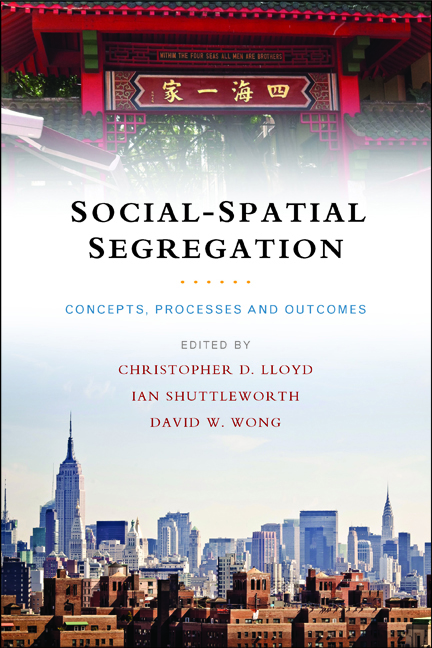eleven - Segregation, choice-based letting and social housing: how housing policy can affect the segregation process
Published online by Cambridge University Press: 04 March 2022
Summary
Introduction
In this chapter we investigate the process of minority ethnic segregation in English social housing. Successive governments have expressed a commitment to the contradictory aims of providing greater choice – through the introduction of choice-based letting (CBL) – for households accessing an increasingly marginalised social housing sector, while also expressing a determination to create more mixed communities and neighbourhoods. We consider the concept of choice in the context of a heavily residualised social housing sector, arguing that, for social housing tenants at least, the concept of real choice is a misnomer. We draw on research that has utilised unique administrative data and analysed the moves of all entrants into and movers within the social renting sector over a 10-year period in England. The conclusion is that the introduction of CBL has influenced the residential outcomes of minority ethnic groups and resulted in highly structured neighbourhood sorting that has segregated minority populations into the least desirable neighbourhoods of English cities.
Many of the chapters in this volume report on the ways in which segregation can be measured (see, for example, Chapter Two, this volume), or the degree to which specific populations are segregated in the residential or even school context (see, for example, Chapter Ten). At the heart of these chapters is a discussion about segregation indices, either as a means through which the state of segregation can be measured and reported, or as a problematic indicator that requires careful consideration and deployment. This chapter takes a different approach by investigating neighbourhood sorting (see also Chapters Nine, Ten and Thirteen). The study of segregation is, at one level, the study of variance in neighbourhood characteristics. That is to say, the amount by which the population in one place varies compared to the expected mean level of variation. While it is important to identify where high and low levels of variation occur, of more importance is the understanding of how the variation occurs in the first place. As a consequence, we explicitly explore the dynamic nature of the neighbourhood and the flows of households into neighbourhoods of different types. This chapter combines previous research by the authors of this chapter (van Ham and Manley, 2009; Manley and van Ham, 2011), which investigates the effect of CBL on how prospective social housing tenants sort into dwellings and neighbourhoods, and how household choice influences the composition of a neighbourhood.
- Type
- Chapter
- Information
- Social-Spatial SegregationConcepts, Processes and Outcomes, pp. 247 - 268Publisher: Bristol University PressPrint publication year: 2014



